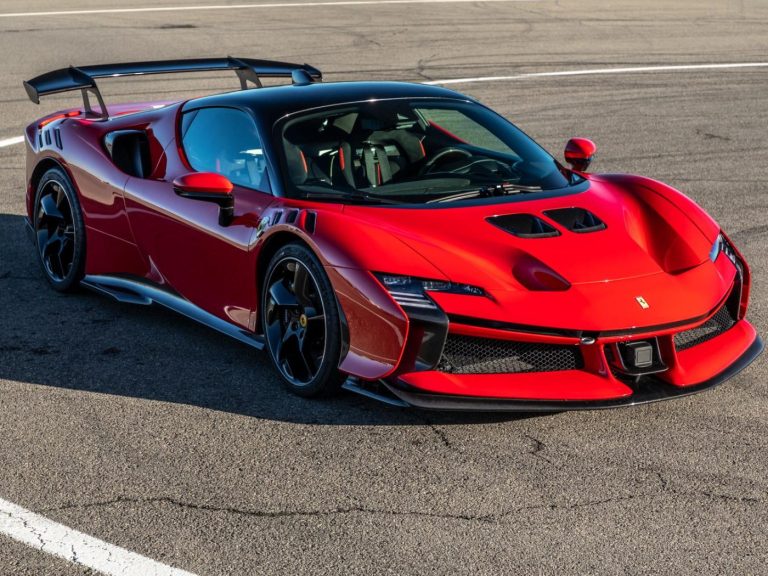Revolutionising Performance: The Rise of Hybrid Hypercars
In the world of high-performance vehicles, the introduction of hybrid Hypercars marks a ground-breaking shift in automotive engineering. These remarkable machines blend cutting-edge technology with the raw power of traditional engines, offering an unparalleled driving experience. At Hypercars, our team of expert engineers and designers is at the forefront of this revolution, creating Hypercars that not only outperform their predecessors but also align with modern sustainability goals. The synergy of electricity and combustion fuels the future of speed, efficiency, and innovation. Join us as we delve into the exciting world of hybrid Hypercars, where performance meets eco-consciousness.

The 1950’s and 1960’s saw the unintentional conception of the idea of Hypercar’s. Engineers Awoke to the concept of creating something better than the best. Cars that were faster than all the rest or more exaggerated than all those previously.
By the 1980’s companies like Ferrari, Jaguar and Porsche began toying with these ideas, creating the most expensive and fastest cars of the time.
The 1990’s witnessed the explosion in small manufacturers joining the race to build the fastest industrialised Hypercar. Many of these attempts failed with only a handful of cars successfully making it to production.
By the 21st Century only a handful of the best of these Hypercar manufacturers existed and with them the giants of motoring, like Lamborghini, Ferrari, and McLaren had now joined the fight to build the best. Now came the true birth of what we see today as the HYPERCAR!
2010 onwards has seen, and will continue to see, the largest technological progression in speed and the greatest evolution in Hypercar’s ever, finally taking us into the realms of the future.



As the 21st Century progressed it became apparent to the world that vehicles guzzling our dwindling oil supplies and other resources was now becoming far less acceptable. All cars (not just Super and Hyper) needed to become more environmentally friendly and fuel efficient. A feat not easily accessible to regular car manufacturers, let alone creators of supercar heaven.
Things were made worse for the Supercar/Hypercar market with the introduction of Co2 regulations in Europe where the majority of Supercar automakers are based. Many Supercar makers began using weaker engines and enhancing their power with turbochargers. The death of V10’s and V12’s seemed almost imminent.
The answer would come in a principle dating back to the 1900’s when automobiles were first coming to bare… Hybrid technology.
The Elektrobil, developed by Ferdinand Porsche and Lohner-Werke, was first introduced to the public at the 1900 Paris Exposition. The first prototype was two-wheel drive, using two front-wheel hub-mounted motors to power the wheels. The same principle was used numerous times in the design of our first cars but, as we have seen, automobile makers soon turned to the use of internal combustion to power the horseless carriage.
The principle of a hybrid vehicle is that different motors generally work better at different speeds. An electric motor is more efficient when it comes to turning power or producing torque. A combustion engine, on the other hand, is far superior at maintaining speed. By using both electric motors and combustion engines we get the best of both worlds along with better energy efficiency and fuel economy.
As technology advanced, car manufacturers largely continued to rely on combustion engines, making several unsuccessful attempts to explore hybrid power. It wasn't until 1997, with the introduction of the rather boring Toyota Prius, followed by the Honda Insight in 1999, that hybrid technology began to gain traction. Although these vehicles were slow and far from the exhilarating nature of a Hypercar, they demonstrated to the world that hybrid technology could be a viable option for powering cars.
This sparked interest among other manufacturers, particularly Toyota, Honda, and Hyundai, who began producing similar models. By 2010, two major brands ventured into creating more powerful hybrid vehicles. BMW showcased their turbo diesel hybrid concept at the 2009 International Motor Show in Germany, which would later evolve into the BMW i8 by 2013. The following year, at the 2010 Paris Motor Show, Jaguar introduced the impressive 778 bhp C-X75, developed in collaboration with the Williams F1 team. Unfortunately, the C-X75 never went into production, with only five prototypes created, one of which appeared in the 2015 James Bond film Spectre.
With BMW and Jaguar proving that it was feasible to create a Supercar using hybrid technology, other manufacturers began to explore and design their own hybrid models. While some, like Porsche and McLaren, quickly embraced the concept, others, such as Ferrari, held off until the launch of their first hybrid, the SF90, in 2019. Lamborghini was also in the process of planning their first hybrid, the "Asterion," around the same time however this was shelved in favour of the Urus.